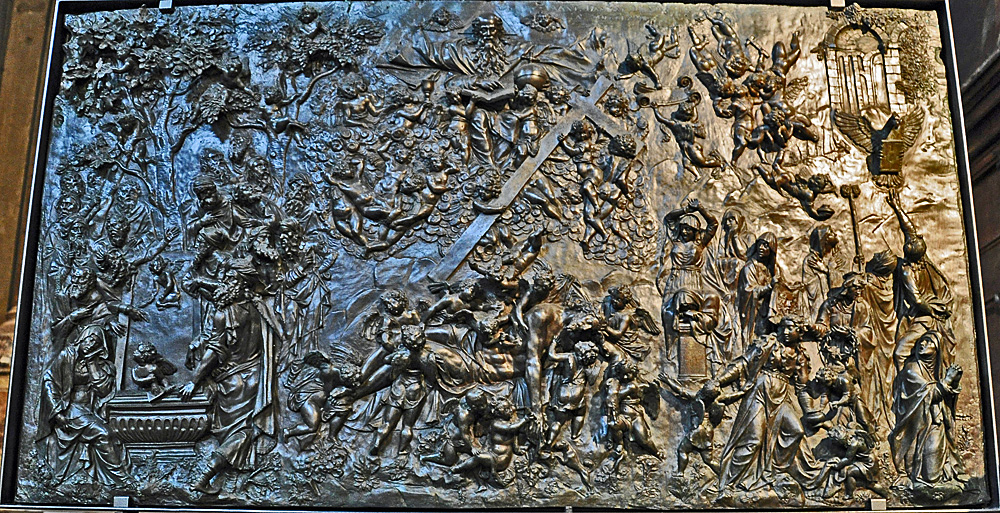The Death of Jesus

Bronze plaque
Church of San Moisè, Venice
In Christian teaching, Christ's death on the cross atones for sin and enables reconciliation between God and mankind. This "Atonement" theology is the point of the "Death of Jesus" iconographic type. Thus, in the center of this plaque angels carry to the Father the
body of Jesus
with the instruments of his Passion – the sponge
on which he was offered vinegar and gall,
the hammer
used to nail him to the cross, the
crown of thorns,
the
veil
Veronica used to wipe his face, and the
scroll
on which Pilate had ordered that his "crime" be posted. We also see
Mary Magdalene
and the
women of Jerusalem
whom Jesus had addressed on the way to Calvary. One of them weeps on the column that conventionally refers to the scourging of Jesus. Above it all,
the Father
receives the cross by which his son has expiated the sins of mankind. His right hand points to a passage in a book while his left arm cradles the mappa mundi that signifies his rule over the earth.
In late medieval Crucifixion images, angels collect the blood from Jesus' wounds in cups
(example).
Here the angel on the Father's right offers him a cup shaped like the kind of chalice used in the Mass. The point is to affirm a further doctrine: that the wine blessed in the Mass becomes the same blood that Jesus shed on the Cross, offered to the Father in a memorial participation in the atonement effected by Christ.
On the left is an adaptation of the iconographic type in which Mary and the apostles lay the body of Jesus in a sarcophagus, although in this case the sarcophagus is already closed. Diagonally across on the right, in a telling contrast, is the kind of tomb often pictured in images of the Resurrection. The cross itself traces that diagonal and brings home the concept that all the blood and sorrow of the Passion constitute Christ's victory over death and his reconciliation of God and man.
View this image in full resolution.
Read more about images of the death of Jesus.
Photographed at the church by Richard Stracke, shared under Attribution-NonCommercial-ShareAlike license.